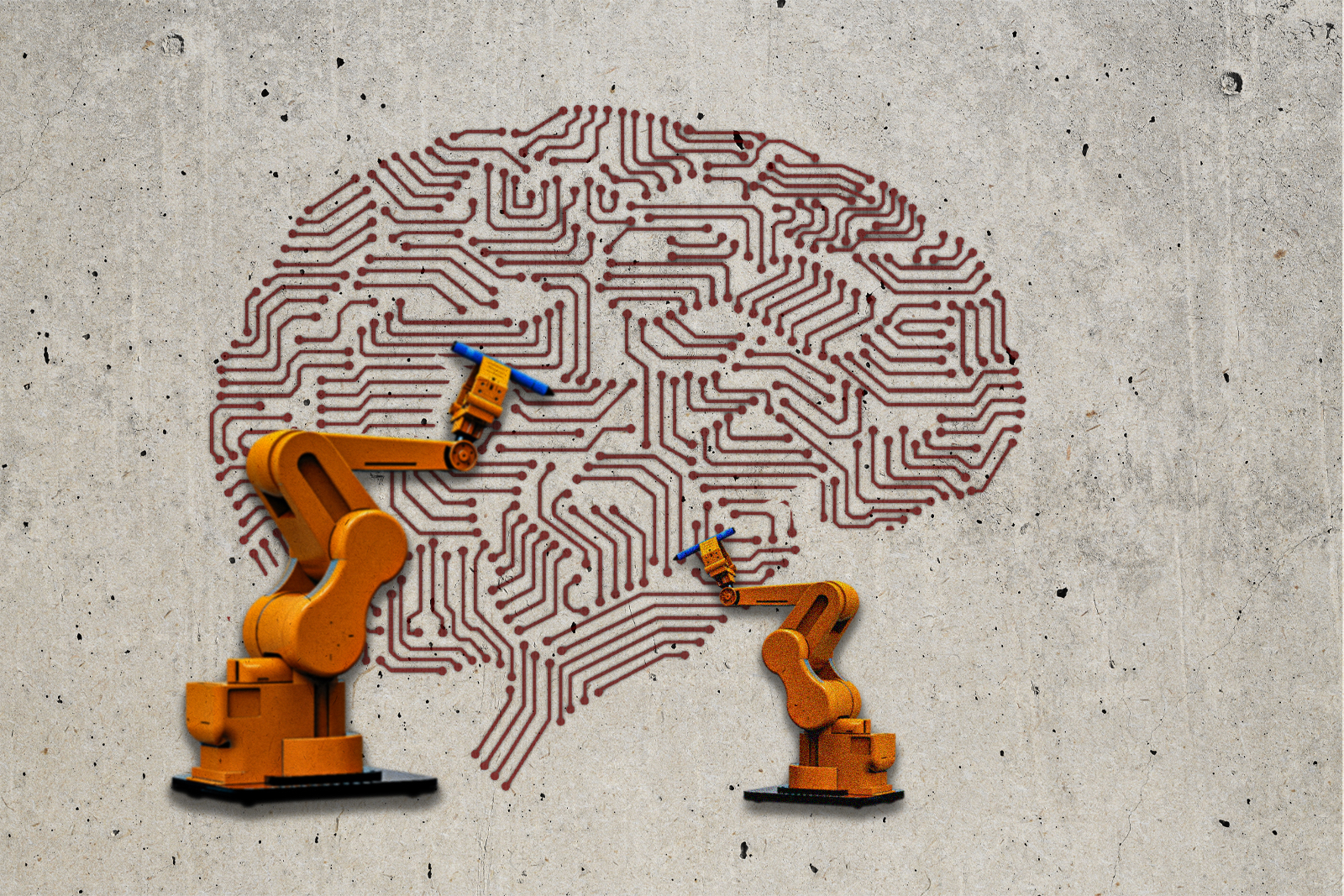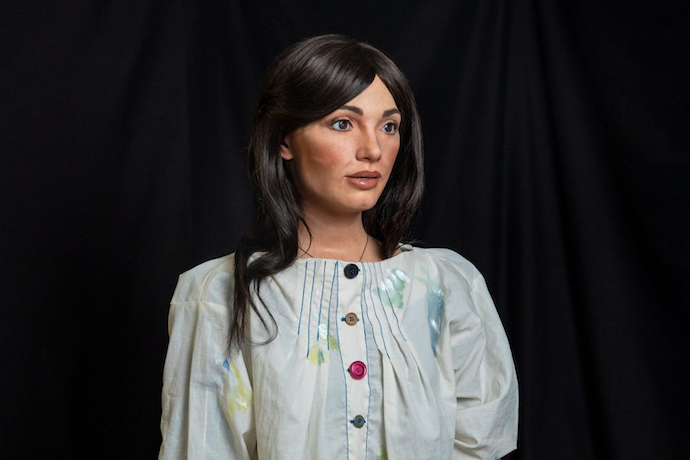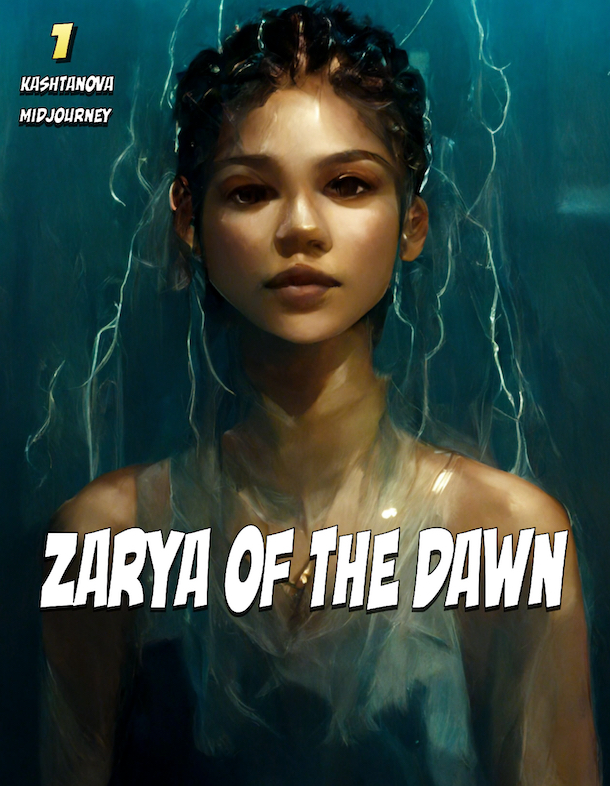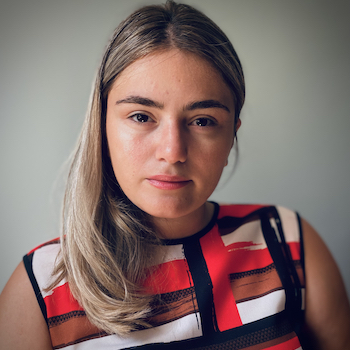
Tech
Machine as Author: Perspectives on AI-Created Works and Copyright
Generative artificial intelligence and its outputs have emerged as significant challenges for the global copyright framework. Intellectual property rights, designed to promote creativity and innovation, naturally intersect with AI’s increasing presence in creative fields. The World Intellectual Property Organization (WIPO) has recognized the importance of artificial intelligence and frontier technologies, frequently addressing these issues in its WIPO Conversations series, where AI remains a recurring topic.
When it comes to AI and copyright, both the input and output sides present problems. Lawsuits are ongoing, alleging copyright violations due to the use of copyrighted works as training data for AI models. On the output side, questions arise about authorship, creativity, and the capacity of copyright law to cover AI-generated content. Increasingly autonomous AI systems, such as the ultra-realistic robot artist Ai-Da, exhibit a wide range of creative abilities, including drawing and sculpture. It remains to be determined how, if at all, the content produced by generative AI can qualify for copyright protection.
Copyright and machine creativity
Historically, copyright emerged as the legal framework to protect the interests of authors in literary and artistic domains. In balancing private and public interests, copyright aims to reward authors for their creative labor and ensure the public dissemination of works. Until recently, the notion that only humans could engage in creative activity was unchallenged. AI has upended this assumption.
Creativity is often characterized by novelty and problem-solving. Arthur Miller defines creativity as “the production of new knowledge from already existing knowledge.” This concept is intrinsically linked to problem-solving, which drives creative endeavors. Studies of creativity have occurred simultaneously in cognitive psychology and computer science, recognizing that creative processes in human brains share similarities with computer operations, thereby paving the way for research in computational creativity.
The current renaissance of AI owes much to the adoption of machine learning, which mimics human brain functions through neural networks. Since the 1970s, examples of machine creativity have existed. Programs like AARON have produced paintings and music, with some results potentially passing the Turing Test. However, these programs heavily relied on their programmers’ instructions, limiting their autonomy. The advent of generative adversarial networks (GAN) and creative adversarial networks (CAN) has taken machine creativity a step further by increasing software autonomy, making the creative process more akin to human experiences.

It has been suggested that cracking the code of machine creativity might enhance our understanding of human creativity. While this might be true, even if scientists successfully replicate the cognitive aspects of creativity, the enigma of creativity itself may remain unsolved. Human creativity involves intangible notions such as intuition, imagination, motivation, and emotion, which machines have yet to replicate. Aidan Meller, director of the Aidan Meller Gallery and co-creator of Ai-Da, acknowledges that the creative robot lacks consciousness and a soul—attributes often associated with human creativity. Nevertheless, he argues that Ai-Da’s artistic output and creative process bear significant similarities to human endeavors. Like humans, machines analyze data, learn from it, and produce “creative works.”
Regardless of the creative process—whether driven by intuition and emotion or not—machines and software today generate high-quality content. Wherever value is found, there is an interest in protecting and owning it. Given that AI-produced content (text, images, paintings, etc.) would typically qualify for copyright protection, questions naturally arise regarding the scope of this protection.
Author, work, and questions for copyright
People often speak about copyright protection for specific works, but a deeper examination reveals that protection is granted for the moral and economic interests of the creator—an author. Even though different jurisdictions may value authors slightly differently, without establishing authorship, there can be no work and, therefore, nothing to be protected by copyright. The notions of “work” and “author” are inextricably linked in copyright law. No copyrightable work can exist without an author, and if there is no work, authorship in the legal sense becomes meaningless. When it comes to evaluating possible copyright protection for AI-generated content, authorship must be examined first, as the work flows from the author.
The next logical question is: “Who is or who can be an author?” and “Does an author have to be a human being?” Currently, across jurisdictions, copyright exists for original works of authorship. The Berne Convention, the most important multilateral agreement on copyright, repeatedly speaks of protection offered to “original” works. Although it does not provide a definition or the requirements for originality, it is generally assumed that the Convention’s definition of a work implies a requirement of human intellectual effort or creativity. This conclusion is strengthened by court decisions in both the United States and the European Union and is implied in the Universal Declaration of Human Rights, which puts forward that “Everyone has the right to the protection of the moral and material interests resulting from any scientific, literary or artistic production of which he is the author.”
While it is true that authorship in real life is a human capacity, authorship is also a legal notion. In the U.S., for example, the “work for hire” concept is common practice. Corporations automatically own and are considered the legal authors of creative pieces produced by employees. This proves that the conventional understanding of being an author and the legal construct of authorship is not the same. There is some flexibility in placing legal authorship; however, considering the current framework of IP law, its human-centric focus, and the lack of legal personality for AI, to protect AI-generated content, it is crucial to identify a human being involved in the creative process who can be assigned authorship.
Humans have, for centuries, used various tools in their creative processes, but the very nature of AI, with its capacity to make autonomous choices, makes it the most unconventional of tools. One must ask: when does something stop being a tool and start being a (co)creator? In light of almost nonexistent legislative guidance, courts around the world are confronted with this issue, forcing them to provide a course of action in real-time.
This brings us to the reexamination of both the creative process, which now often involves collaboration with AI machines or software, and ultimately the controversial differentiation between what is known as AI-assisted versus AI-generated works. Generally, AI-assisted outputs are created with significant human intervention and direction, while AI-generated content can emerge without it. However, in practice, this distinction is not always clear-cut. The incentive to secure copyright protection plays a major role in qualifying most AI-involved output as AI-assisted.
European perspective
European case law on originality relies entirely on the notion of a human engaging in creative acts—reflecting “creative choices.” As the European Union’s Court of Justice considered in the Painer case, for example, “[B]y making creative choices in setting up, shooting and developing the photo, and so ‘the author of a portrait photograph can stamp the work created with his ‘personal touch.’”
It has been established in the EU legal system that tools, including various kinds of machines, can be used in the creative process. Using a camera to create photographic works, for instance, does not interfere with establishing authorship and allocating copyright to the human using the machine. Following this logic, a narrative has developed arguing that using AI can be analogous from a copyright perspective. As long as human creative choice-making is involved in the creative process, there is no reason why the resulting work, for which AI has been used, should not be protected.
However, considering the capabilities of AI algorithms, it becomes challenging to prove that a human has made enough creative choices and intellectual effort to produce the final work. As Jane Ginsburg explained in 2003, “the participation of a machine or device, such as a camera or a computer, in the creation of a work need not deprive its creator of authorship status, but the greater the machine’s role in the work’s production, the more the ‘author’ must show how her role determined the work’s form and content.” Similarly, in 2000, a Paris court reasoned that “The computer-assisted musical composition, when it involves human intervention, a choice of the author, leads to the creation of original works.” While works produced with computer support are accepted, French courts reject the idea that computers can replace humans in producing work independently.
To protect content produced with AI within the EU, the approach is to look at the creative process broadly and to deem the output machine-assisted rather than generated. Given the current usage of AI in the creative process, a human will inevitably be involved at some stage, even if it is simply turning on the machine or providing a generic prompt. However, the question remains: are these actions creative enough to earn the user authorship rights?
As Bernt Hugenholtz and João Quintais explain, “‘AI-assisted output’ is intended to refer to all output, applications, or works generated by or with the assistance of AI systems…AI-assisted output will always go hand in hand with some form of human intervention…Even if the connection between the human intervention and the AI-assisted output is increasingly remote, at this point in time it is hard to conceive of content that is generated through AI that involves no human agency whatsoever.”
The EU legal system assumes that there are three main stages in a creative process, namely: conception, execution, and redaction. While humans might no longer control the execution process when utilizing AI, they still retain control of the conception and redaction stages and can therefore claim copyright.
American perspective
The U.S. stance on copyright protection for AI-assisted or generated content became clear in the recent case of “Zarya of the Dawn,” by artist Kris Kashtanova who utilized MidJourney, a form of generative AI, to produce a series of images for a graphic novel alongside her human-generated storyline. The copyright applicant repeatedly told the U.S. Copyright Office that the AI software she used was similar to Adobe Photoshop. In other words, she tried to classify her AI-generated results as computer-aided rather than generated works. However, the U.S. Copyright Office did not accept this argument and rejected her claim. In the U.S. context, the authorities rejected the idea that AI software is merely a tool.

The decisive element is the ability to predict or control the final output. When a human using the machine cannot exercise control over the final output, creative choice-making is lacking. It is rather the machine that makes these choices, not the human. In examining “Zarya of the Dawn,” the Copyright Office found there was too much “distance” between the user’s input and the output for which copyright protection was requested.
Changing perspectives in China
Similarly to other jurisdictions, Chinese copyright law does not provide guidance on AI-produced content, leaving it up to the courts to clarify this issue. Two cases, in particular, showcase the evolving attitudes toward the legal standing of AI-generated content.
In April 2019, the Beijing Internet Court addressed whether an AI-generated piece constituted a work. This case involved automatically generated analysis of judicial cases using Wolters Kluwer’s database, owned and published by the plaintiff, Feilin Law Firm. The defendant was China’s Internet giant, Baidu. The plaintiff first published the report generated by AI on September 9, 2018. Just one day later, a similar report was published on a platform operated by Baidu. A dispute arose.
The court held that neither the graphics in the report nor the textual part was a piece of copyright-protected work under Chinese law. As for the graphics, the court determined they were produced by relevant software and data from Wolters Kluwer’s database, showing no creative agent’s work. The result was entirely determined by the data, meaning changes in the database would also cause the graphics to change. For the textual part and the report in general, the court also found it was no literary work because it did not convey the original expression of the thoughts and feelings of software developers or users.
It took the Chinese courts only one year to change its attitude toward AI-generated content. In the Tencent case in 2019, the Nanshan District Court in Shenzhen ruled that AI-generated objects can constitute works. The plaintiff was Chinese Internet giant Tencent, which developed a writing robot called Dreamwriter. Since its introduction, Dreamwriter generated approximately 300,000 articles per year. On August 20, 2018, Tencent published a financial report completed by Dreamwriter on its website. On the same day, the Yingxun company copied and published the entire article on its website, leading to a copyright dispute.
While acknowledging the report as a piece of copyrightable work, the court examined the creative process, which at first glance seems to be fully undertaken by Dreamwriter. The court found that there were four stages to the creative process: data service, triggering and writing, intelligent verification, and intelligent distribution. The court concluded that Tencent, through its employees, “made arrangements and choices in terms of data input, themes expressed in articles, writing styles, etc.” This was considered enough human intellectual and creative participation, making the final output meet the conditions for the protection of literary works under copyright law.
Based on these two cases, one can observe how attitudes in China evolved toward AI-generated content. Chinese courts initially adopted a narrower interpretation standard regarding human participation but later switched to a broader interpretation of the creative process. While this was not the case before, in the Tencent case, the court established that setting AI software parameters and inputting instructions should be included as part of the creative process. Ultimately, Chinese scholars have not truly distinguished between AI-assisted and AI-generated content, allowing them the flexibility to more easily regard AI as a tool used by humans and its generated objects as works.
Takeaways
Despite slight variations in interpretation, human participation remains crucial for copyright protection. If we accept that the concept of an author in copyright law inherently implies a human being, then unless a sufficient connection is established between the AI-produced output and a human being involved in the creative process, the output risks being legally authorless, rendering it incapable of copyright protection.
Even in the most liberal jurisdictions, the existence of a human author is required for copyright protection. To qualify AI-involved creative content for copyright protection, the argument must be made that such works are AI-assisted rather than AI-generated. This argument potentially undermines the notion of AI-generated content. If any human involvement is sufficient from a creative effort perspective, then nothing is fully AI-generated.
In general, it is harder to protect purely AI-generated content unless human creative work is reflected in the work, either before or after the AI’s contribution. The challenge lies in distinguishing between AI-assisted and AI-generated content. At what point does AI assistance reach a level where it is not merely a tool in the user’s hands but something that has largely determined the very nature of the work?
Protecting AI-generated content with copyright will lower the bar for originality. Consequently, the importance and level of creative participation of a human author inevitably diminish.
